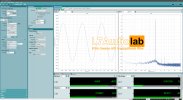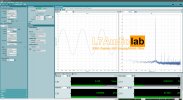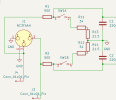- Thread Starter
- #81
I mean yes, true, but even the actual AP AUX0025 is only specced to -110 dB distortion, so we are still doing a lot better than that!-133dB H3 at 5Volt is not complying with Amirm’s measurement. He measured -140dB H3 at 4V output. H3 at 5V should be even lower. The difference of measurements between AP and E1DA may have something to do with AP’s autorange. The kink in Amirm’s SINAD and measured level graph is AP adjusting it’s input sensitivity. I found that once it reaches around 120 THD+N, APU+ADC always gets better measurements than Amirm’s AP.
Ultimately the AUX-0025 isn’t designed for DAC testing down at these levels. It does fine down to -120dB or so, but really it’s for testing power amps.
I am still curious about that extra THD and lower noise with the APU in use in your measurements.



